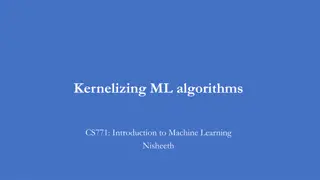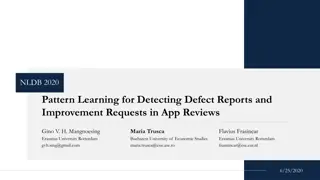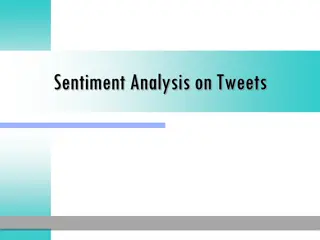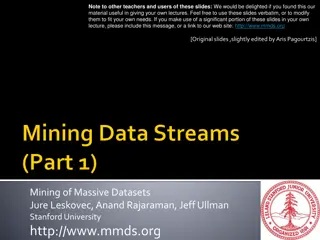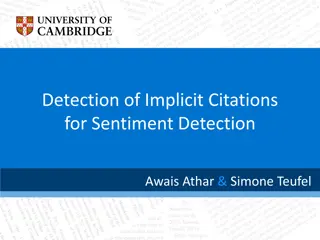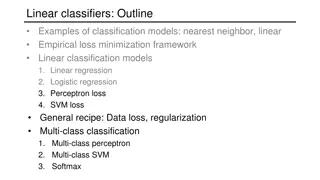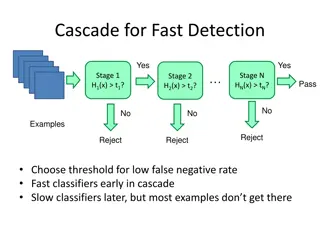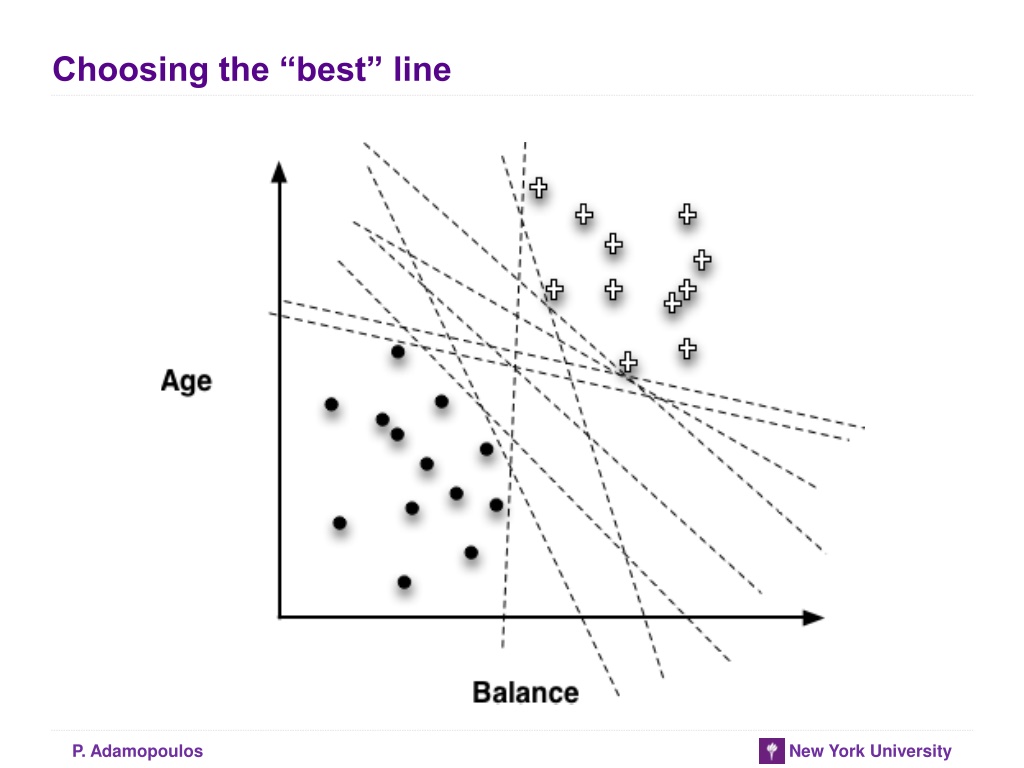
Understanding Objective Functions and Loss Functions in Machine Learning
In machine learning, choosing the best line or model involves understanding objective functions and loss functions. Objective functions define our goals, while loss functions determine penalties based on prediction errors. Common examples include linear regression, logistic regression, and support vector machines, each using a different objective function. Support Vector Machines (SVMs) utilize hinge loss to penalize misclassified points effectively. Different loss functions like zero-one loss and squared error are also discussed, showcasing how they impact model training. Overall, grasping these concepts is essential for developing accurate machine learning models.
Download Presentation

Please find below an Image/Link to download the presentation.
The content on the website is provided AS IS for your information and personal use only. It may not be sold, licensed, or shared on other websites without obtaining consent from the author. If you encounter any issues during the download, it is possible that the publisher has removed the file from their server.
You are allowed to download the files provided on this website for personal or commercial use, subject to the condition that they are used lawfully. All files are the property of their respective owners.
The content on the website is provided AS IS for your information and personal use only. It may not be sold, licensed, or shared on other websites without obtaining consent from the author.
E N D
Presentation Transcript
Choosing the best line P. Adamopoulos New York University
Objective Functions Best line depends on the objective (loss) function Objective function should represent our goal A loss function determines how much penalty should be assigned to an instance based on the error in the model s predicted value Examples of objective (or loss) functions: ? ?;? = ? ?(?) 2[convenient mathematically linear regression] ? ?;? = ? ? ? ? ?;? = ? ? ?(?) Linear regression, logistic regression, and support vector machines are all very similar instances of our basic fundamental technique: The key difference is that each uses a different objective function P. Adamopoulos New York University
Classifying Flowers P. Adamopoulos New York University
Choosing the best line P. Adamopoulos New York University
Support Vector Machines (SVMs) P. Adamopoulos New York University
Support Vector Machines (SVMs) Linear Discriminants Effective Use hinge loss Also, non-linear SVMs P. Adamopoulos New York University
Hinge Loss functions Support vector machines use hinge loss Hinge loss incurs no penalty for an example that is not on the wrong side of the margin The hinge loss only becomes positive when an example is on the wrong side of the boundary and beyond the margin Loss then increases linearly with the example s distance from the margin Penalizes points more the farther they are from the separating boundary P. Adamopoulos New York University
Loss Functions Zero-one loss assigns a loss of zero for a correct decision and one for an incorrect decision Squared error specifies a loss proportional to the square of the distance from the boundary Squared error loss usually is used for numeric value prediction (regression), rather than classification The squaring of the error has the effect of greatly penalizing predictions that are grossly wrong P. Adamopoulos New York University
Non-linear Functions Linear functions can actually represent nonlinear models, if we include more complex features in the functions P. Adamopoulos New York University
Non-linear Functions Using higher order features is just a trick Common techniques based on fitting the parameters of complex, nonlinear functions: Non-linear support vector machines and neural networks Nonlinear support vector machine with a polynomial kernel consider higher-order combinations of the original features Squared features, products of features, etc. Think of a neural network as a stack of models On the bottom of the stack are the original features Each layer in the stack applies a simple model to the outputs of the previous layer Might fit data too well (..to be continued) P. Adamopoulos New York University
Example: Classifying Flowers P. Adamopoulos New York University
Example: Classifying Flowers P. Adamopoulos New York University
Example: Classifying Flowers P. Adamopoulos New York University
Avoiding Over-fitting Tree Induction: Post-pruning takes a fully-grown decision tree and discards unreliable parts Pre-pruning stops growing a branch when information becomes unreliable Linear Models: Feature Selection Regularization Optimize some combination of fit and simplicity P. Adamopoulos New York University
Regularization Regularized linear model: argmax ? [fit ?,? ? penalty(?)] L2-norm The sum of the squares of the weights L2-norm + standard least-squares linear regression = ridge regression L1-norm The sum of the absolute values of the weights L1-norm + standard least-squares linear regression = lasso Automatic feature selection P. Adamopoulos New York University





